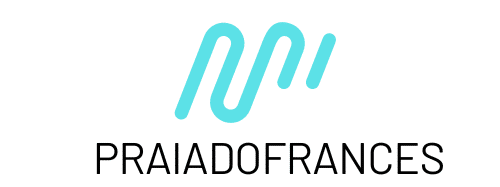How Can Voice-Assistant Technology Aid Dyslexic Readers?

In the digital age, technology is not only reshaping the way we communicate and work, but it is also revolutionizing the way we learn and read. For individuals with learning disabilities like dyslexia, the rise of digital technology, particularly voice-assistant tools, has brought a new wave of possibilities that make reading more accessible. If you’re involved in the world of education or if you’re simply curious about the intersection of technology and learning, this article will explore how voice-assistant technology can help dyslexic readers.
Dyslexia and the Challenge of Reading
Cela peut vous intéresser : Can AI-Powered Skin Analysis Apps Revolutionize Dermatology?
Let’s start by understanding the issue at hand. The term dyslexia refers to a neurological condition that affects a person’s ability to read, write, and spell. It’s a common learning disability, affecting about 20% of people to varying degrees. For dyslexic individuals, the traditional methods of reading and writing can be a struggle due to difficulties in recognizing words, decoding them, and interpreting their meanings.
Technology has the potential to turn these challenges around. With the proliferation of digital devices and software, a range of assistive tools have been developed to help dyslexic individuals navigate the world of text. One such promising tool is voice-assistant technology.
A lire en complément : What’s the Role of AI in Crafting Sustainable Urban Development Plans?
What is Voice-Assistant Technology?
Voice-assistant technology refers to digital tools that use speech recognition software to perform tasks or services. You’ve probably used one before – think of Apple’s Siri, Amazon’s Alexa, or Google Assistant. These tools can perform tasks like setting reminders, answering questions, and even controlling home devices.
But they can also be used in the realm of reading, acting as digital reading companions for those who struggle with text. For dyslexic readers, these tools can read out loud digital text from ebooks, PDFs, and web pages, helping them understand the content without the need to decode written words.
How Voice-Assistant Technology Can Help Dyslexic Readers
There are several ways in which voice-assistant technology can aid dyslexic readers. First and foremost, it can help them access information in a format that suits their learning style. By reading text aloud, these tools can help dyslexic individuals better comprehend and retain information.
Moreover, voice-assistant technology can also boost confidence. Knowing they have a tool that can reliably interpret text for them can help dyslexic readers feel more confident in their abilities to learn and understand. This, in turn, can stimulate more interest in reading and learning.
Voice-Assistant Tools for Dyslexic Readers
Several voice-assistant tools are available in the market that are specifically designed to help dyslexic readers. These aren’t your run-off-the-mill Siri or Alexa, but tools that have been developed with dyslexic readers in mind.
Google’s Read&Write app, for instance, offers a range of features tailored for dyslexic learners. It can read text aloud, highlight words as they’re read, and even translate text into other languages. Apple’s VoiceOver is another tool that can read out loud any text on the screen, even describing images, charts, and other visual information.
The Future of Voice-Assistant Technology and Dyslexia
As technology continues to evolve, so will the ways it can assist dyslexic readers. Already, developers are working on integrating machine learning and artificial intelligence into voice-assistant tools to create personalized learning experiences.
For instance, future voice-assistants could adapt to the individual’s reading level, providing more support for difficult texts and less for easier ones. They might also be able to predict which words or concepts a dyslexic reader may struggle with, providing additional explanations or context.
In a world where technology is becoming more ingrained in our lives, it’s crucial that we harness its potential to help all members of society. For dyslexic readers, voice-assistant technology can open up a world of text that might have otherwise been inaccessible. As we continue to innovate and develop these tools, we can hopefully create a more inclusive and accessible learning environment for all.
Implementing Voice-Assistant Technology in Special Education
As we delve deeper into the realm of technology-integrated learning, it is important to discuss the implementation of voice-assistant technology in special education classrooms. Special education teachers are always on the lookout for innovative ways to help their students overcome learning disability challenges. Voice-assistant technology opens a window of opportunities for these educators and their students with dyslexia.
With text-to-speech features, voice-assistant tools can read aloud digital content, making it easier for dyslexic students to follow along and comprehend. Some tools also have speech-to-text capabilities, allowing students to formulate their thoughts and responses verbally before transcribing them into written words. This can significantly alleviate the stress associated with reading and writing for dyslexic students.
Moreover, many voice-assistant tools offer word prediction features. These tools can predict and suggest words as the student types, reducing frustration and increasing efficiency in written tasks. As such, with voice-assistant technology, teachers can cater to the diverse needs of their students, creating a more inclusive learning environment.
When implemented in special education classrooms, voice-assistant technology can empower dyslexic students, boosting their confidence and interest in learning. Furthermore, these tools can also provide educators with valuable insights into their students’ progress and challenges, helping them tailor their teaching strategies accordingly.
Conclusion: Embracing the Digital Age for Dyslexic Readers
In conclusion, the rise of digital technology is a game-changer for individuals struggling with dyslexia. Voice-assistant technology, in particular, holds great promise in making the world of text more accessible to dyslexic readers. By reading digital content aloud, translating speech into text, and predicting words, these tools help dyslexic individuals overcome the challenges they face in reading and writing.
The potential benefits of voice-assistant technology go beyond simply aiding dyslexic readers. These tools also have the capacity to revolutionize special education, enabling teachers to better cater to their students’ diverse learning needs. In addition, they can help boost the confidence of dyslexic students, fostering a love of learning and opening up new avenues for academic success.
As we look towards the future, it is exciting to think about the advancements that lie ahead. With the integration of machine learning and artificial intelligence, voice-assistant tools will continue to evolve, providing even more personalized support for dyslexic readers.
However, while these technological advancements are indeed promising, it is crucial that we remember the human element in education. Technology tools can support, but they cannot replace, the dedicated teachers who work tirelessly to help their students overcome learning disabilities.
As we embrace the digital age, let’s make sure we do so with a balanced approach, harnessing the power of technology to enhance learning, while also cherishing and valuing the irreplaceable role of human interaction and support in education. After all, it is the combination of technological innovation and human compassion that will truly make a difference in the lives of people with dyslexia.
